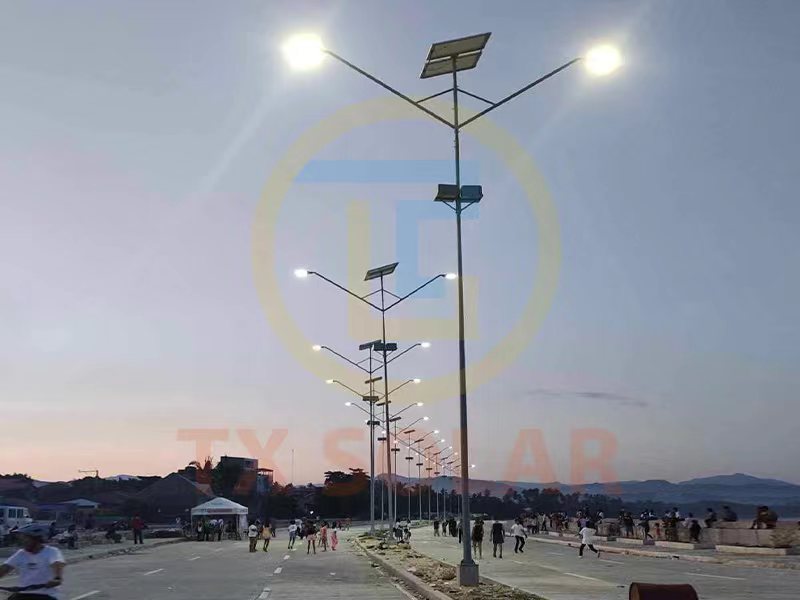Highway street lamps play a vital role in ensuring road safety and visibility, especially at night and in adverse weather conditions. These tall, sturdy buildings are strategically placed along highways to provide ample lighting and improve visibility for drivers and pedestrians. The installation of highway street lamps requires careful planning, precise engineering and compliance with safety standards to ensure optimal functionality and longevity.
The installation process of highway street lamps involves several key steps, starting with thorough planning and site assessment. Before installation begins, engineers and planners conduct a thorough assessment of the highway to determine the most appropriate location for the streetlights. Factors such as traffic flow, road curvature and potential obstructions were taken into account to ensure the luminaires were placed to maximize visibility and safety for road users.
Once the best location is determined, the installation process begins with preparing the site. This includes clearing any obstructions in designated areas and ensuring the ground is level and stable to support the streetlight structure. In addition, underground utilities such as electrical wires and communication cables were located and marked to prevent any disruption during installation.
The next step in the installation process is the assembly and installation of the street light poles. These poles are typically made from durable materials, such as steel or aluminum, to withstand harsh outdoor conditions. The height and design of the light poles have been carefully chosen to provide adequate illumination while complementing the overall aesthetics of the highway. Anchor the pole securely to the ground using a concrete foundation or a specialized anchoring system to ensure stability and resist strong winds and other environmental factors.
Once the light poles are in place, the electrical components of the street lights are installed. This includes the wiring, fixtures, and control mechanisms that allow the lights to operate efficiently. Electrical components are carefully integrated into the design of the poles, ensuring they are protected from environmental factors and potential damage. Safety measures such as grounding and surge protection are also implemented to minimize the risk of electrical hazards and ensure the longevity of the street lighting system.
After installing the electrical components, mount the light itself to the light pole. LED technology is becoming increasingly popular in highway street lighting due to its high energy efficiency, long service life and excellent lighting effects. LED lights provide bright, even illumination for improved visibility while consuming less energy than traditional lighting technologies. The installation of LED lights further contributes to the overall sustainability and cost-effectiveness of highway street lighting systems.
Once the streetlights are fully installed, a rigorous testing and inspection program is carried out to ensure they meet required safety and performance standards. This includes photometric testing to verify the uniformity and intensity of light distribution, as well as electrical testing to confirm proper operation of the entire system. Make any necessary adjustments or tweaks to keep your street lights operating at optimal capacity.
In addition to the technical aspects of installation, safety considerations are crucial throughout the process. Installers follow strict safety protocols to prevent accidents and ensure the health of all involved. This includes using personal protective equipment, adhering to electrical safety guidelines and implementing traffic control measures to protect workers and motorists near the installation site.
In addition, highway street lamps are installed with environmental impact in mind. We strive to minimize disruption to the surrounding ecosystem and prioritize environmentally friendly practices such as proper waste disposal and the use of energy-efficient lighting technology. By considering environmental impact, the installation process aims to promote sustainable infrastructure development and minimize the ecological footprint of the highway streetlight system.
In summary, the installation of highway street lamps is a meticulous and multi-faceted process that requires expertise, precision and a commitment to safety and sustainability. By strategically placing and installing streetlights along highways, visibility and safety for road users is significantly improved, reducing the risk of accidents and improving overall road conditions. As technology continues to advance, the installation of modern energy-efficient street lighting systems will play an increasingly important role in creating safer and more sustainable transportation infrastructure.
If you are interested in highway street lamps installation, welcome to contact solar street light supplier TIANXIANG to read more.
Post time: Jul-03-2024

